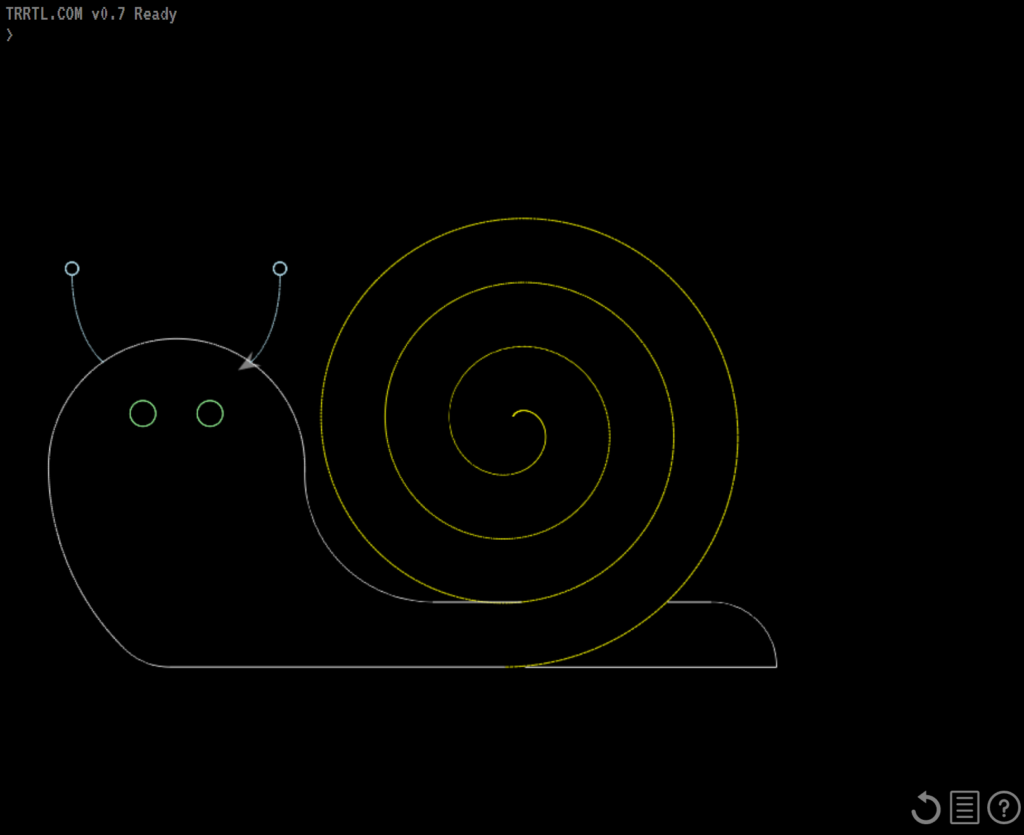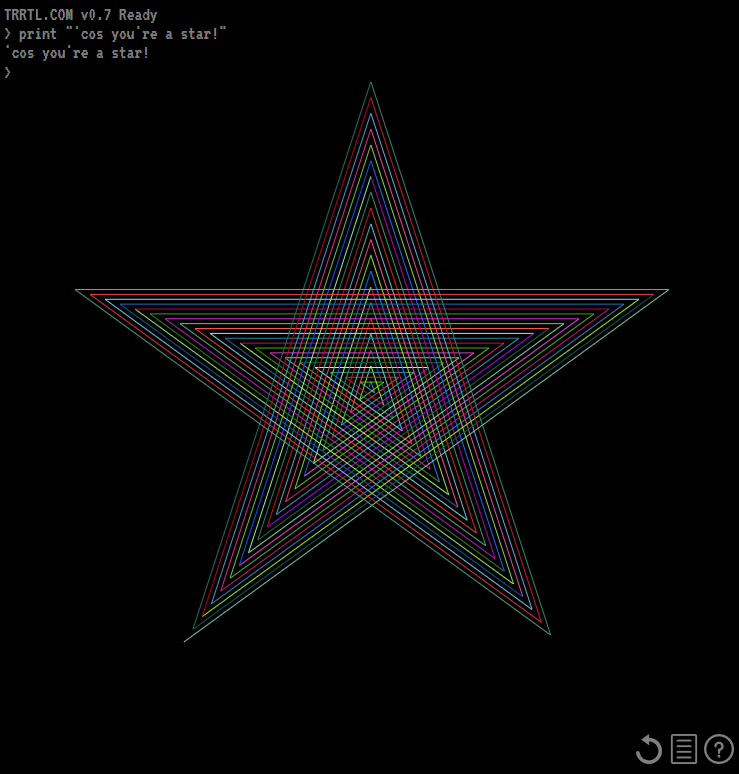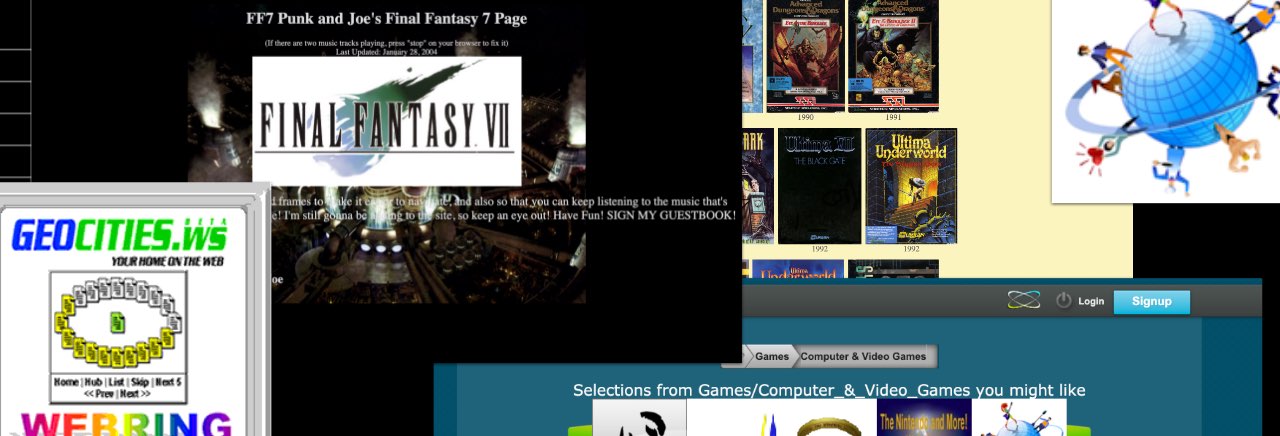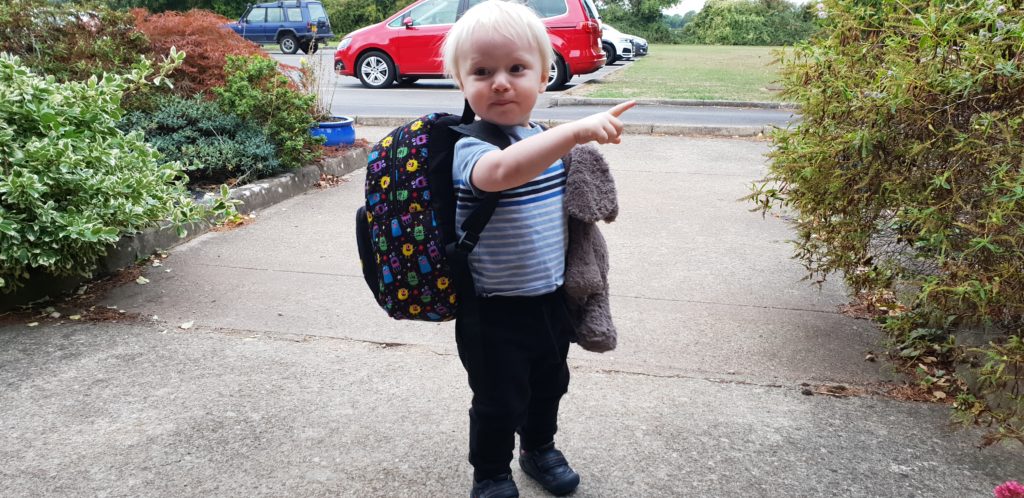Autotuned the cat because he won’t shut up in the mornings. I don’t know how this helps but I did it anyway.
Honey, I autotuned the cat
This is a repost promoting content originally published elsewhere. See more things Dan's reposted.
This is a repost promoting content originally published elsewhere. See more things Dan's reposted.
Autotuned the cat because he won’t shut up in the mornings. I don’t know how this helps but I did it anyway.
tl;dr: TRRTL.COM is my reimplementation of a Logo on-screen turtle as a CoffeeScript-backed web application
For many children growing up in the 1970s and 1980s, their first exposure to computer programming may have come in the form of Logo, a general-purpose educational programming language best-known for its “turtle graphics” capabilities. By issuing commands to an on-screen – or, if they were really lucky, robotic – cursor known as a turtle, the student could draw lines and curves all over the screen (or in the case of robotic turtles: a large sheet of paper on the floor).

While our eldest and I were experimenting with programming (because, well…) a small robotic toy of hers, inspired by a book, it occurred to me that this was an experience that she might miss out on. That’s fine, of course: she doesn’t have to find the same joy in playing with Logo on an Amstrad CPC or a BBC Micro that I did… but I’d like her to be able to have the option. In fact, I figured, there’s probably a whole generation of folks who played with Logo in their childhood but haven’t really had the opportunity to use something as an adult that gives the same kind of satisfaction. And that’s the kind of thing I can fix.

TRRTL.COM is my attempt to produce a modern, web-based (progressive, offline-first) re-imagining of Logo. It uses CoffeeScript as its base language because it provides all of the power of JavaScript but supports a syntax that’s more-similar to that of traditional Logo implementations (with e.g. optional semicolons and unparenthesised parameters).

If you’ve not used Logo before, give it a go. Try typing simple commands like forward 100 (steps), right 90 (degrees), and so
on and you’ll find it’s a bit like an etch-a-sketch. Click the “help” icon in the corner for more commands (and shorter forms of them) as well as instructions on writing longer programs
and sharing your work with the world.

And of course the whole thing is open source in the most permissive way imaginable, so if you’re of an
inclination to do your own experiments with <canvas>, Progressive Web Apps, and the like, you’re welcome to borrow from me. Or if anybody wants to tag-team on making
a version that uses the Web Bluetooth API to talk to a robotic turtle or to use WebRTC to make LAN “multiplayer” turtle art, I’m totally game for that.
My volunteering and academic workload for the rest of this year is likely to reduce the amount of random/weird stuff I put online, so it might get boring here for a while. Hope this tides you over in the meantime.
This is a repost promoting content originally published elsewhere. See more things Dan's reposted.
It was 1949 when highways officials started to look at traffic issues affecting Newtown.
A multi-million pound bypass that has been 70 years in the planning officially opened in Powys on Thursday.
One haulier said Newtown bypass will make a “big difference” due to 45-minute hold-ups in the town, while the local AM said it was a “momentous” day.
The Welsh Government said the road will ease congestion by about 40% in the town centre.
A public notice printed in 1949 shows a bypass was being considered by the former Montgomeryshire County Council.
The four-mile (6.4km) road runs to the south of the town with two lanes in one direction and one in the opposite direction, to provide overtaking points.
…
Never thought I’d see the day. Back when she used to work in Newtown, Claire would routinely be delayed on her journey home by traffic passing through the town that could quite-justifiably have gone around it were it not for the lack of a decent trunk road, and she’d bemoan the continuing absence of the long-promised bypass. That was like 15 years ago… I can’t imagine what it’s been like for the people who’ve lived in Newtown, waiting for the bypass to be built, for their entire life.
In the time it’s taken to build this bypass, people who’ve been too young to drive have heard about it, grown up, had children of their own, and those people have had children who are now old enough to drive. The mind boggles.
This is a repost promoting content originally published elsewhere. See more things Dan's reposted.
As a child, I wanted to be a botanical researcher. I loved being outdoors and used to visit the botanical gardens near my house all the time. My grandma inspired me to change my mind and helped me get interested in science. She lived in the country and we would look at the stars together,…
As a child, I wanted to be a botanical researcher. I loved being outdoors and used to visit the botanical gardens near my house all the time. My grandma inspired me to change my mind and helped me get interested in science. She lived in the country and we would look at the stars together, which led to an early fascination in astronomy.
Unusually for the era, both my grandmothers had worked in science: one as a lab technician and one as a researcher in speech therapy. I have two brothers, but neither went into technology as a career. My mum was a vicar and my dad looked after us kids, although he had been a maths teacher.
My aptitude for science and maths led me to study physics at university, but I didn’t enjoy it, and switched to software engineering after the first year. As soon as I did my first bit of programming, I knew this was what I had been looking for. I like solving problems and building stuff that works, and programming gave me the opportunity to do both. It was my little eureka moment.
…
Wise words from my partner on her workplace’s blog as part of a series of pieces they’re doing on women in technology. Plus, a nice plug for Three Rings there (thanks, love!).
This is a repost promoting content originally published elsewhere. See more things Dan's reposted.
The web’s founders fully expected some form of digital payment to be integral to its functioning. But nearly three decades later, we’re still waiting.
Back in the 1990s, when Tim Berners-Lee and his team were creating the infrastructure of the World Wide Web, they made a list of the error codes that would pop up when something went wrong. You’ve surely encountered many of them: “404 Not Found,” which pops up if you click on a dead link; “401 Unauthorized” when you hit a page that needs a password; and so on.
Here’s one you probably haven’t seen—and its absence from your life speaks to why the promise of the early web seems increasingly out of reach: “402 Payment Required.”
That’s right: The web’s founders fully expected some form of digital payment to be integral to its functioning, just as integral as links, web pages, and passwords. After all, without a way to quickly and smoothly exchange money, how would a new economy be able to flourish online? Of course there ought to be a way to integrate digital cash into browsing and other activities. Of course.
Yet after almost three decades, that 402 error code is still “reserved for future use.” So I still have to ask: Where are my digital micropayments? Where are those frictionless, integrated ways of exchanging money online—cryptographically protected to allow commerce but not surveillance?
…
In response to this article being discussed on MetaFilter, I wrote:
The Web Payments Working Group published a specification for a standardised mechanism for the collection of card payment details online, a couple of years ago. It’s not quite the same thing because it’s done in the page application rather than at the HTTP(S) level, but it goes a long way towards solving a lot of the problems with our existing approach to payment processing online.
It’s already seeing adoption in browsers, but merchants and payment processors are unlikely to start rolling it out until adoption until later because (a) they want critical mass and (b) they’re wary of change. But within a few years, you’ll probably see it for the first time, and you might not even notice.
The idea is that instead of asking you to fill out an (arbitrary) form, a web page will ask your browser to get payment details from you in a standardised format. That might mean entering your card details if that’s how you prefer to work (but even if you choose to do this, the form you fill in will look the same every time) but it would instead allow you to use a payment tool built in to your browser, operating system, or password safe to do it for you. I know that browsers and password safes will offer to try to do this today, but standardising the format means that they’ll always be able to achieve it.
Once this technology’s in place, there’s nothing to stop HTTP 402’s implementation being completed: all the infrastructure will exist.
The thing about the future is that when it arrives, you don’t even notice. It’s never jetpacks and flying cars: it’s a series of iterative changes, each one predictable after the completion of the last but the entire ensemble seeming innovative and surprising when taken as a whole.
This is a repost promoting content originally published elsewhere. See more things Dan's reposted.
In the days before the web was mainstream, it was a place of creation. First for education, then for every random idea that any creator had!
As the web transitioned from a network of educational institutions to the consumer force it is today, the early adopters were technologists… AKA geeks!

A hallmark of geek culture is fandom – a deep knowledge of whatever topic interests them. This could be about a book, TV show, movie or band. With this passion comes a desire to share it with the world. Before the internet, there was no clear path. After the web started gaining traction, it was the biggest and easiest megaphone you could want.
It wasn’t always easy to be found, though. There was no search algorithm. Google was not ubiquitous with search. To be found, you needed to be listed on a site that aggregated other sites about your topic.
…
There was always a certain joy to a well-kept webring, back in the day. I’d love to see a return to this kind of “Indieweb dream”, but I don’t think that just wishing for it nor even telling people to go out and do it goes far enough, alone. Hopefully Bryan’s post will help nudge a few people in the right direction, though.
Today I’m attaching a clothes peg to my nose and breathing through a straw for 60 seconds. As I won’t be able to talk while I’m doing this, I’ll type an explanation why:
Like most people, I’ve spent most of my life lucky enough to not really know anything about cystic fibrosis. I first really became aware of it when my friend Jen‘s son Lorcán was diagnosed with it (you may remember I shared a video of hers previously).
It’s a lifelong disorder with no known cure.
It’s a genetic disorder, and as many as one in every 25 people carries the gene that can cause it. Inherit two genes and you’re a sufferer. Among other symptoms, it causes frequent lung infections and difficulty breathing.
I’m taking part in the #strawfiechallenge as an exercise in appreciating how difficult it can be to cope with reduced lung function. A new drug, Orkambi, is helping to extend the lives of sufferers in other countries around the world. But it’s not yet available in the UK. :-(
CF sufferers want #OrkambiNow. They need your politicians to act.
Find out how you can help: www.cfsupportgroup.org
This video is also available at:
Hello, friendly insurance salesman I spoke to earlier today! I’ve been expecting you. Also: sorry.

I’ve been expecting you because you seemed so keen to finish your shift and search for me and, with my name, I’m pretty easy to find. I knew that you planned to search for me because after I caused so much trouble for your computer systems then, well, I probably deserved it.
I’m sorry that I have such an awkward name and that you had to make your computer system work around it. At least it handled it better than Equifax’s did, and you were far friendlier about it than the Passport Office were. It’s an awkward name, yes, but mostly only because programmers are short-sighted when it comes to names. And I say that as a programmer.
I’m sorry that my unusual relationship structure made your computer system do a double-take. My partner Ruth can’t have a husband as well, can she not? Try telling her that! Don’t feel bad: you’re not even the first person this last fortnight to get confused by our uncommon arrangement, and even where my name doesn’t break computer systems, my relationship status does: even the census can’t cope. I’m sure people must assume we’re insanely radical but we’re honestly pretty boring: just like any other family, just with more love. Don’t believe me? We have spreadsheets. You can’t get more boring than that.
I’m sorry that the email address I gave you looked like a typo and you felt you had to check it thrice. It wasn’t, it’s just that I give a different email address to every company I deal with.
I’m sorry that what should have been a click-click-done exercise came down to a live chat session and then a phone call. I don’t mean to be more work for people.

But thank you for being friendly. And useful. And generally awesome. I expected a painful process, perhaps because that’s what I’d had from my last insurer. You, on the other hand (and your Live Chat colleague who I spoke to beforehand) were fantastic. Somehow you were more-pleasant, more-competent, and represent better value than the insurer we’re coming from, so thank you. And that’s the real reason that I hope you’ll follow through on the suggestion that you search for me by name: because you deserve a pat on the back.
So thanks. But yeah: sorry.
Saw this and thought of you, @themissprince: cantunsee.space
Still have “the eye” for pixel-perfect design? #UX
This is a repost promoting content originally published elsewhere. See more things Dan's reposted.
I’m reminded of an old joke (best read aloud), which I’ll repeat for your amusement:
The European Union commissioners have announced that agreement has been reached to adopt English as the preferred language for European communications, rather than German, which was the other possibility. As part of the negotiations, Her Majesty’s Government conceded that English spelling had some room for improvement and has accepted a five-year phased plan for what will be known as EuroEnglish (Euro for short).
In the first year, “s” will be used instead of the soft “c.” Sertainly, sivil servants will resieve this news with joy. Also, the hard “c” will be replaced with “k”. Not only will this klear up konfusion, but typewriters kan have one less letter.
There will be growing publik enthusiasm in the sekond year, when the troublesome “ph” will be replaced by “f”. This will make words like “fotograf” 20 persent shorter.
In the third year, publik akseptanse of the new spelling kan be expekted to reach the stage where more komplikated changes are possible. Governments will enkorage the removal of double letters, which have always ben a deterent to akurate speling. Also, al wil agre that the horible mes of silent “e”s in the languag is disgrasful, and they would go.
By the fourth year, peopl wil be reseptiv to steps such as replasing “th” by “z” and “w” by ” v”.
During ze fifz year, ze unesesary “o” kan be dropd from vords kontaining “ou”, and similar changes vud of kors be aplid to ozer kombinations of leters.
After zis fifz yer, ve vil hav a reli sensibl riten styl. Zer vil be no mor trubls or difikultis and evrivun vil find it ezi tu understand ech ozer.
Ze drem vil finali kum tru.
This is a repost promoting content originally published elsewhere. See more things Dan's reposted.
During the past months I have been tinkering along on Bassoontracker – My browser based Retro Music Tool.
Today, it’s ready for a next big release: Version 0.3.0 is out!…
This is just about the coolest thing in the world. I played with Scream Tracker and a handful of other trackers in the 1990s and I loved the scene, even though I was never talented enough to participate as more than an observer and fan. This is a reimagining of a classic tracker… written entirely in Javascript! So cool!
This is a repost promoting content originally published elsewhere. See more things Dan's reposted.
This is just…wooooah. Proper “dude, my hands are huge” grade moment, for me, when I watched the bubbles form in the droplet of water. I had an idea about what would happen, and I was partially right, but by the time we were onto the third run-through of this experiment I realised that I’d been seeing more in it every single time.
Microgravity is weird, y’all.
This is a repost promoting content originally published elsewhere. See more things Dan's reposted.
…
Here we have a city every building of which is a perfect work of art, and whose setting is nature’s loveliest handiwork, made perfect by the intelligence of man.
How can we believe for a moment that we are now securing the best results of our highest intelligence, when we have it in our power to live in places such as described, and are yet content to crowd ourselves in cities where the streets are narrow, filthy, and ill-paved, where not a blade of grass or a single flower is seen except in isolated parks and a few florists’ windows, and where millions live who never inhale the fragrance of nature’s purest loveliness?
It does not follow that if a city were laid out regularly, it would necessarily become monotonous from sameness. Although the buildings and population would be equally distributed, and each building designed to accommodate about the same number, here all similarity would end; for the beauty of environment would change with almost every move of the beholder. The eye could not rest on any two buildings that were alike in architecture, in design or in coloring. Each and every building of “Metropolis” would be a complete and distinct world of art in itself. Every color and every shade of color would be found in their ceramic treatment. In some instances, there would be a gradual dissolving from a dark shade of color at the base to an almost white at the top of the buildings. In others, the general dissolving of one tint into another would give an effect that would combine all the prismatic tints of the rainbow. In others, a single delicate tint would be the predominating feature. Here, one would look as though chiselled from a block of emerald, another from jet, another from turquoise, and another from amethyst. One would have metallic lustre tints, while others would combine kaleidoscopic effects in colors and designs. Some would vie with nature in their beautiful designs in flowers; and, again. the most beautiful results could be produced in the opalescent effect, that would result from the application of combinations of colors in fine grooves, which could only be seen at the proper angle of observation. With every move of the individual, a transformation would take place. One tint would gradually dissolve through many shades into a different color. Pink would fade into green, green into gold; red, through every shade of purple, to blue, and so on through endless combinations; and with every change of reflected light, there would be a dissolving and gradual change in the beauties around us. We can never obtain grand effects in architecture except by ample space and complete conceptions in buildings.
Perspective is as necessary to artistic expression of architecture as proportion and design. A building that is high and broad should have an open space around it, sufficient to allow of its beauty being grasped as a whole; and a building should be built in such outline. and so removed from other buildings, that it has a continuous and harmonious facade from every point of view. This is not possible in the construction of buildings in our present cities. Our modern office buildings are the result of necessity; and the architect, instead of being allowed the free play of his imagination in the development of an artistic conception, is obliged to make his ideas conform to a contracted and narrow strip of land on which to build, not a building, but a tower.
Imagine for a moment these thirty odd thousand buildings of “Metropolis,” each standing alone, a majestic world of art–a city which with our present population, would be from sixty to seventy-five miles in length, and twenty to thirty in width–a never-ending city of beauty and cleanliness, and then compare it with our cities of filth, crime, and misery, with their ill-paved and dirty thoroughfares, crowded with the struggling masses of humanity and the system of necessary traffic. And then compare the machinery of both systems, and take your choice; for I believe the only obstacle that lies in the way of the building of this great city is man. For if he chooses to build it, he has the necessary intelligence, and can complete it within twenty-five years. The same endless variety in colors and designs would be found in the treatment of interiors, but in the ceramic decoration of upward of one hundred million rooms it would be possible to use the same designs in different colors and combinations of borders and panels in hundreds of thousands of rooms, and yet no two rooms would be treated exactly alike. It would be only natural that there would be hundreds of thousands, possibly millions, of rooms of exactly the same dimensions: and thus machinery would economically come into play where such a wide field of duplication was possible. This is why I assert that tiling, though expensive now as a decorative feature of buildings, would, under these conditions of production, be actually cheaper than the common plaster on our walls. My idea is that the city should be actually a city of porcelain, as far as outside appearance was concerned, except where glass was used, and where wood or metal was used for window frames and doors.
I wish to speak here of another advantage which would result from there being millions of rooms of the same dimensions. In the manufacturing department of “Metropolis” rugs and carpets would be one of the large industries; and, where there where millions of rooms of like dimensions, it would be possible to make special machinery to weave carpets or rugs to the exact dimensions of rooms. In cases where millions were to be made to the same dimensions there could be thousands of different designs and combinations and shades of coloring.
…
He’s most-famous for inventing the safety razor (which he didn’t) or for inventing the disposable safety razor blade (which he also didn’t) or for popularising the razor-and-blades economic model (which he did, to great success), but far fewer know of King C. Gillette’s The Human Drift. In it, Gillette proposes his idea of an perfect, semi-utopian metropolis in which all of the citizens of North America could reside, arcology-style. Based on a multi-tiered hexagonal-grid structure with optimal efficiency and boundless expandability, the city itself would become “…the heart of a vast machine, to which over the thousands of miles of arteries of steel the raw material of production would find its way, there to be transformed in the mammoth mills and workshops into the lifegiving elements that would sustain and electrify the mighty brain of the whole, which would be the combined intelligence of the entire population working in unison, but each and every individual working in his own channel of inclination.”
I don’t know how realistic his ideas were, but they’d make for spectacular science-fiction.
This is a repost promoting content originally published elsewhere. See more things Dan's reposted.
It was presented to her more than two decades ago by the Society for Imaging Science and Technology, in recognition of the pivotal—and altogether unexpected—role she played in shaping the digital world as we know it.
Among some computer engineers, Lena is a mythic figure, a mononym on par with Woz or Zuck. Whether or not you know her face, you’ve used the technology it helped create; practically every photo you’ve ever taken, every website you’ve ever visited, every meme you’ve ever shared owes some small debt to Lena. Yet today, as a 67-year-old retiree living in her native Sweden, she remains a little mystified by her own fame. “I’m just surprised that it never ends,” she told me recently.
…
While I’m not sure that it’s fair to say that Lena “remained a mystery” until now – the article itself identifies several events she’s attended in her capacity of “first lady of the Internet” – but this is still a great article about a picture that you might have seen but never understood the significance of nor the person in front of the lens. Oh, and it’s pronounced “lee-na”; did you know?
This is a repost promoting content originally published elsewhere. See more things Dan's reposted.
Debate: Does Mozilla have more influence as a Chrome rival or ally?
…
“Thought: It’s time for @mozilla to get down from their philosophical ivory tower. The web is dominated by Chromium, if they really *cared* about the web they would be contributing instead of building a parallel universe that’s used by less than 5%?” He made it clear the viewpoint was his personal opinion, not Microsoft’s position.
Mozilla is indeed in a sticky situation, trying to improve the web when it comes to things like openness, privacy and new standards. That mission is harder with declining influence, though, and Firefox now accounts for 5 percent of web usage, according to analytics firm StatCounter. But without independent efforts like Firefox, and to an extent Apple’s Safari, the web will stop being an independent software foundation and become whatever Google says it is.
And plenty of people don’t like that one bit. Indeed, Mozilla defenders see the nonprofit’s mission as even more important with Chrome’s dominance.
“I couldn’t disagree with you more. It precisely *because* Chromium has such a large marketshare that is vital for Mozilla (or anyone else) to battle for diversity,” tweeted web developer Jeremy Keith in a response. “‘Building a parallel universe’? That *is* the contribution.”
…